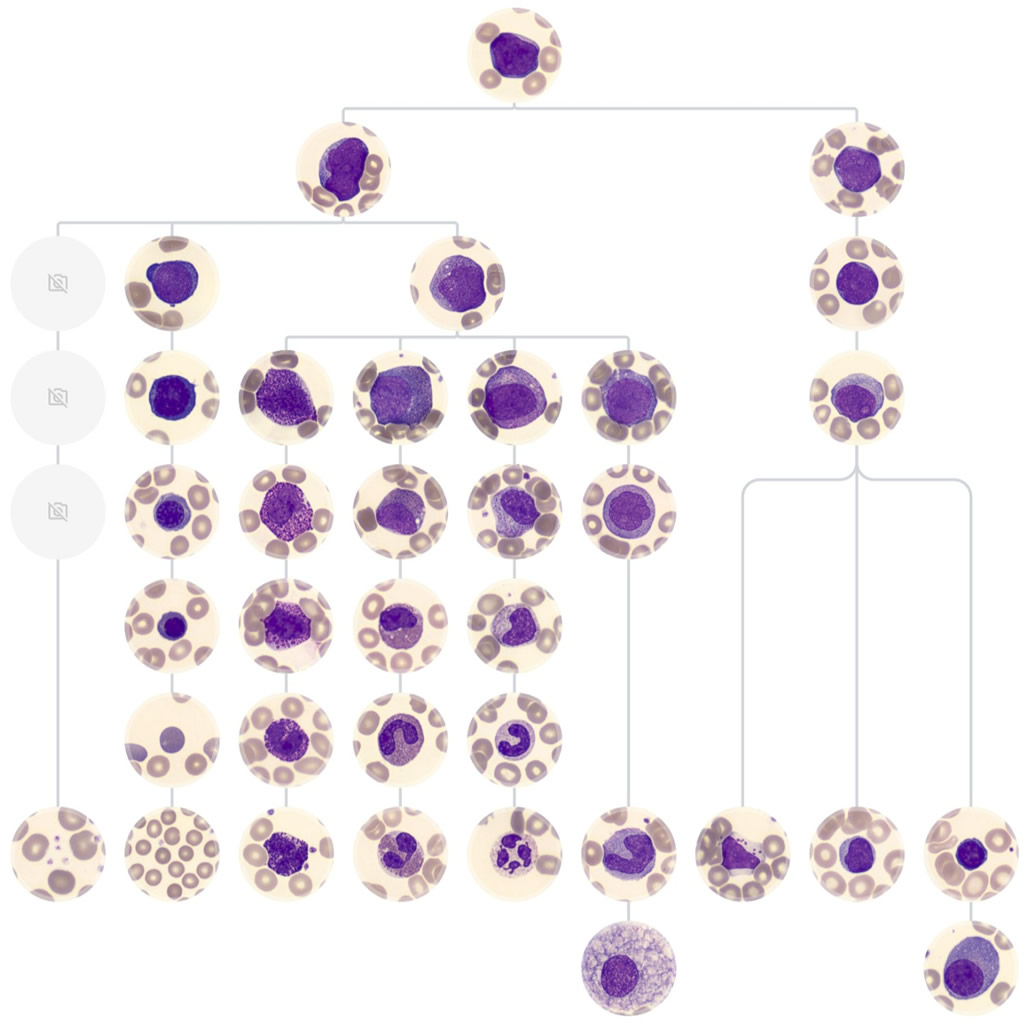Cells
This section includes the most common examples of maturation and differentiation stages of the various cell lines. Although the presence of some of these cells is not normal (e.g., blasts or promonocytes), the morphology as shown here can be considered 'normal'; dysplastic or other characteristic abnormalities can be found under 'Aberrations'.
Hematopoiesis
Maturation
Although there may be subtle differences between cells and their maturation stages, some rules of thumb can be applied to estimate the age of a cell. Consider the structure and size of the nucleus, the color of the cytoplasm and the ratio of nucleus to cytoplasm.
Nucleus
Young cells have a fine-grained chromatin structure that, as the nucleus matures, evolves into a coarser pattern in which white spots can be seen in the nucleus. The subsequent stage is complete condensation where the nucleus clumps together and eventually fragments (apoptosis).
Cytoplasm
Cytoplasm tends to become lighter in color as the cell matures. This can be seen in particular with neutrophilic granulocytes, erythrocytes and monocytes. Lymphocytes are an exception in this regard, considering that mature, resting lymphocytes generally have scant darkblue cytoplasm. In addition, cellular activity can also make the cytoplasm darker (for example in plasmacytoid lymphocytes).
Ratio nucleus/cytoplasm
Immature cells have a big nucleus that spans a relatively large part of the entire cell. During maturation, the size of the nucleus goes down, making more of the cytoplasm visible. Again, lymphocytes are an exception; in general, resting lymphocytes have barely visible cytoplasm.



































